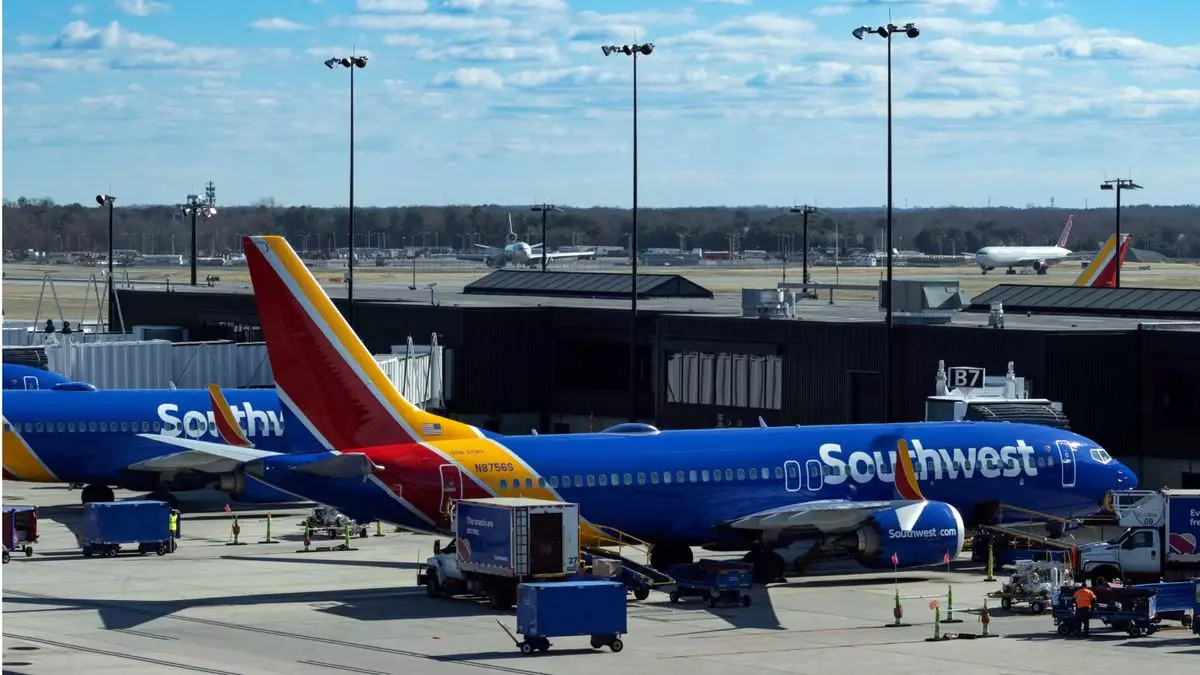In a significant corporate shift, Southwest Airlines announced that Ryan Green, the airline’s Executive Vice President and Chief Transformation Officer, will officially step down from his role on April 1, as disclosed in a recent filing with the U.S. Securities and Exchange Commission (SEC). This move comes after Green had already communicated his intentions to depart on February 18. Having joined Southwest in 2002, he has played a crucial role in shaping the company’s direction over the years. Green began his tenure as Chief Commercial Officer in October 2022 before transitioning to his present role in July 2024, after serving nearly seven years as Chief Marketing Officer. His exit represents not just a personal career change but also a broader strategical realignment within the company.
Green’s departure coincides with turbulent times for the airline, particularly following pressure from significant investors. One such investor, Elliott Investment Management, recently secured approval to increase its stake in Southwest from 14.9% to 19.9%. This decision was part of an amended cooperation agreement, which stemmed from Elliott’s previous threat of a proxy battle aimed at restructuring the airline’s board and executive leadership, particularly targeting President and CEO Bob Jordan. Despite the tension, Jordan managed to retain his position, indicating a complicated dynamics of power and influence within the company amidst these recent shifts.
Adding to the company’s challenges is the announcement of substantial workforce reductions, as Southwest disclosed its intention to cut approximately 15% of its corporate workforce, which translates to about 1,750 positions. This unprecedented move, termed by Jordan as a historic decision, has led to the departure of eleven senior leaders, demonstrating how the airline is addressing both internal efficiency and external pressures.
The resignation of a key executive like Green alongside widespread layoffs paints a picture of an airline navigating through turbulent waters. The dual pressures of internal restructuring and external investor expectations present a complex challenge for Southwest Airlines. While Green’s role involved overseeing transformation initiatives, his departure indicates that the company is looking to recalibrate its strategy potentially in response to investor demands and market realities shaped by recent financial pressures.
As Southwest Airlines prepares for its next phase, the company must consider not only the immediate ramifications of leadership changes and workforce reductions but also the long-term strategies necessary to ensure sustainable growth. The airline industry, particularly in the post-pandemic landscape, is characterized by volatility, and companies like Southwest need leadership that is agile and responsive to evolving circumstances.
The exit of Ryan Green and the accompanying strategic decisions at Southwest Airlines reflect the intricate balance between leadership, corporate culture, and stakeholder expectations in shaping the future trajectory of one of America’s major carriers. As the organization grapples with these shifts, its path forward will be determined not just by the mechanics of staffing and governance but by a clear vision for its operational and strategic future.


Leave a Reply